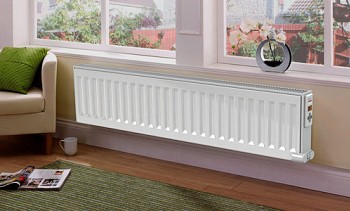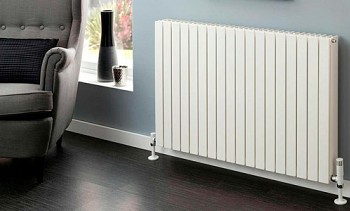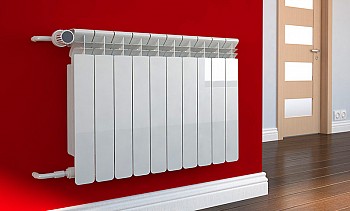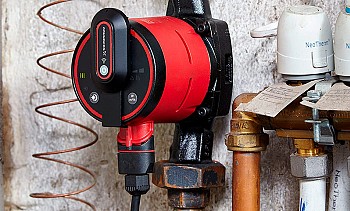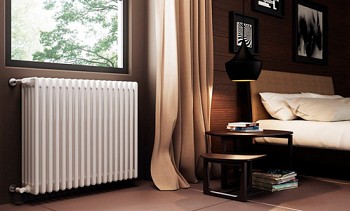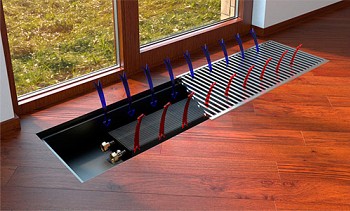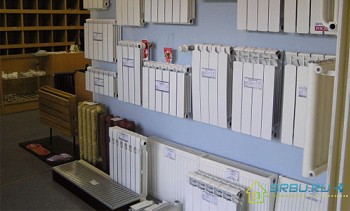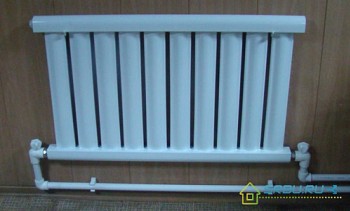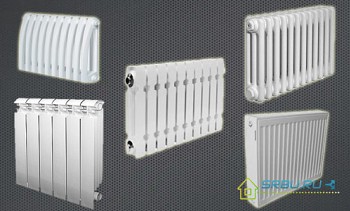Which heating radiators are better depending on the heating system and the requirements
It is pleasant to live in a house where it is comfortable warm. The right choice of heating radiators can help in this. The modern market amazes with the variety of these simple household appliances. Let's try to figure out which heating radiators are best suited for your apartment. Consider the main parameters to which you should pay attention.
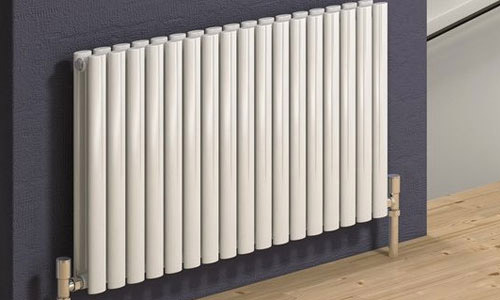
What criteria to rely on when choosing heating radiators
Undoubtedly, in the first place, important indicators are reliability, durability and safety. Of course, you are interested in the heating system working properly and for many years. It is unlikely that anyone will like the options for unexpected flooding of neighbors due to damage to radiators. Such an opportunity should be minimal. The duration of trouble-free operation is a very important parameter that should be taken into account when buying a radiator.
By far, the second most important criterion is the efficiency of the heating equipment. After all, radiators are installed so that, regardless of cold weather, the room always has the optimum air temperature. Radiators with the best thermal conductivity will provide the owners with the most comfortable accommodation.
It is important to choose radiators with the perfect combination: “price - quality”. It's no secret: the modern standard of living makes many save. Therefore, the cost of heating radiators is of considerable importance. By the way, each type of radiator has both disadvantages and advantages, because ideal equipment has not yet been invented.
In modern multi-storey buildings, water is used as a heat carrier. But passing through pipes, such a coolant is a rather aggressive medium. Therefore, many radiators undergo internal corrosion. Most modern heating radiators are polymer coated on the inside. Please note: steel radiators are less corrosive than aluminum ones. But the most reliable ones are our usual cast-iron products, as well as some bimetallic radiators.
An important parameter for the efficient operation of the radiator is the operating pressure. Therefore, in the radiator you choose, this indicator cannot be less than the minimum value, which is 7 Atm. Radiators with a pressure characteristic of 15 atmospheres are the most optimal and are able to withstand water shocks.
All domestic radiators are qualified depending on the material used, design. The modern market offers consumers steel, cast iron and the most popular aluminum and bimetal heating radiators. Which of them are best suited in a particular case, try to figure it out.
Cast Iron Heating Radiators
Consider the most simple and familiar cast-iron radiators. Their working pressure is 9 atmospheres, the maximum test pressure reaches 15 atmospheres.
The advantages of cast-iron heaters include excellent resistance to corrosion, undemanding to the purity of the coolant. Due to this, cast-iron radiators are widely used in urban houses equipped with central heating. After all, corrosion resistance is a very important parameter. In summer, water is necessarily drained from the heating systems, leaving the heater to tear to corrosion.The cast-iron radiator will not rust in anticipation of the new heating season.
The inner bore of the cast-iron radiator has a large diameter. According to the laws of physics, this leads to low hydraulic flow resistance. In this regard, cast-iron radiators are successfully used by heating systems with natural circulation.
But still, the flaws are obvious. The main minus: cast iron is too heavy metal. Therefore, radiators have a large mass. This leads to a complication of the installation process of such a heating system with the need for reliable fasteners.
Cast iron radiators are characterized by high thermal inertia. Therefore, they heat up for a long time, cool for a long time. This temperature mode is not very comfortable: for a long time, the air remains cold or, conversely, too warm.
It is unlikely that cast-iron radiators decorate the interior. Bulky heating systems always want to hide from prying eyes. Cleaning will have to be done often and carefully, because the cast-iron construction in the form of sections tends to accumulate dust abundantly.
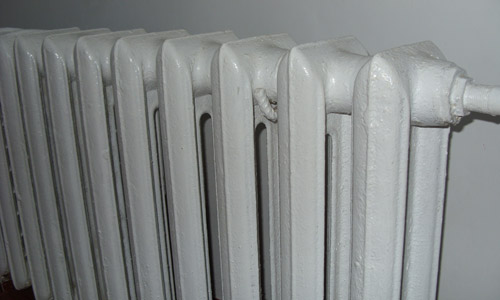
Cast iron heating radiators.
Aluminum radiators
Aluminum sectional radiators are noteworthy. They quickly conquered the market for heating appliances. Lightweight and easy to install, they confidently replaced heavyweights - cast-iron radiators. Let's consider their obvious advantages.
Aluminum radiators have excellent heat dissipation. Therefore, in cold weather, the room heats up very quickly. The small mass of the radiator facilitates their easy transportation and installation. And one more advantage: beautiful aluminum radiators fit perfectly into any modern interior.
The most popular models of aluminum radiators: 350mm and 500mm. The power and number of sections of the heating radiator depends on the area and height of the heated room.
Basically, two types of radiators are made: extruded and cast. Depending on the purpose of the room, aluminum radiators with a pressure parameter of 6 or 12 atmospheres are used.
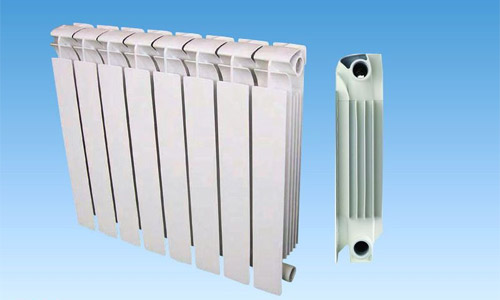
Aluminum radiators, front view and side view.
Bimetal radiators
Finally, we pay attention to bimetallic sectional radiators. Undoubtedly, they combine the best qualities of steel radiators and aluminum. Inside, they are made of steel, and on top are covered with a beautiful aluminum shell. The durable steel of such a radiator withstands high heat carrier pressure, which aluminum radiators cannot boast of. It serves as reliable protection against corrosion, which can also be called a great advantage of such radiators. The aluminum shell plays an important role. Thanks to it, bimetallic radiators have excellent heat dissipation and a beautiful design.
Steel separates the coolant from the aluminum. Water moves through special steel tubes, heating the aluminum panels that are attached to them. Indoor air quickly reaches a comfortable temperature.
- See the material >> Properties and specifications of bimetal heating radiators
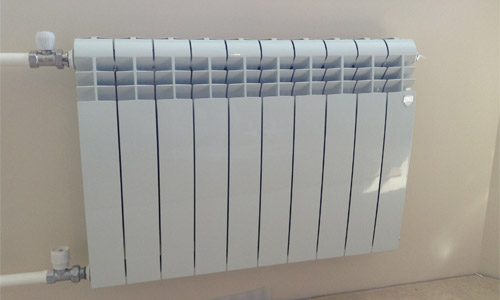
Bimetal radiator connected to the heating network.
Video. Bimetal heating radiators
Panel radiators
In the post-Soviet space, panel steel radiators are not common. More willingly used in the countries of the USA and Europe. The advantages of these radiators include: a high degree of heat transfer, reliability and durability. With a large area of such radiators, a sufficiently small temperature of the coolant for quick heating of the room.
Panel steel radiators are characterized by the lowest convection. The air heats up evenly, which is comfortable and very good for health. Only a warm floor can enter into worthy competition with them. But unfortunately, it is better not to use such radiators in standard Russian heating systems. They do not withstand the high pressure of the coolant, which is observed in our central heating.If you have a private house, then we advise you to pay very close attention to panel heating radiators.
Panel batteries are similar to convector type appliances, being their more advanced version.
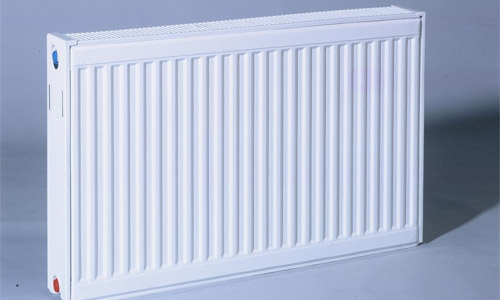
Panel radiator.
Heating convectors or registers
A heating convector is a pipe on which thin plates of steel are fixed. The design is simple and fairly primitive. They were often used in Soviet-built houses. But now, having gone through some evolution, they have somewhat changed their appearance and functionality.
There is a very large selection of them on the market. Along with cheap ones, quite expensive, elite models of imported production are also offered. Electric convectors are becoming very popular. They are used when installing a warm floor. Plinth convectors popular in Western countries are considered a novelty.
In appearance, these rather modest, relatively cheap products have many advantages. The simple design provides convectors good reliability. Small dimensions do not interfere with the implementation of design ideas.
Another big plus is the affordable cost. A significant drawback is the small heat transfer in the convection heating method. Simply put, the air is heated unevenly due to a kind of thermal draft.
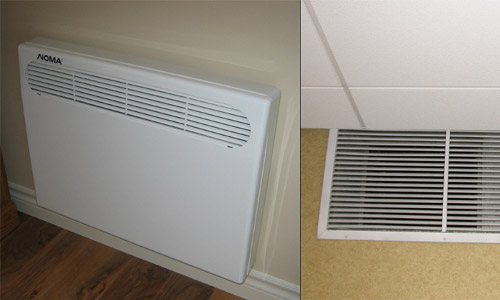
Heating convectors on the left wall, on the right floor.
Steel tubular heating radiators
Products are reminiscent of cast-iron batteries. But at the same time they have a beautiful modern design. These are products of foreign manufacturers. When buying steel tubular batteries, one very important nuance must be taken into account - they work at low pressure. In the USA and European countries, heating systems are often installed in low houses and when the coolant moves, high pressure is not created.
Therefore, before buying a beautiful foreign radiator, carefully read the accompanying technical documentation. Pay particular attention to the properties and characteristics of the products. Make the final purchase decision only if you are absolutely sure that this radiator will work in difficult domestic conditions.
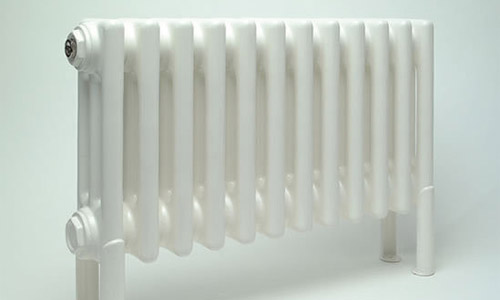
Tubular heating radiator.

